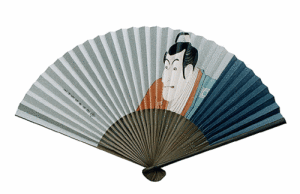 “扇子”即折扇[1]。本来世界各国都有团扇[2],人们夏季爱用。可是没有将扁平[3]的团扇折迭[4]缩小[5]的想法。听说团扇第一次变为折扇的是日本人。折扇反映了日本人特有的小巧[6]别致[7]的想法。
“扇子”即折扇[1]。本来世界各国都有团扇[2],人们夏季爱用。可是没有将扁平[3]的团扇折迭[4]缩小[5]的想法。听说团扇第一次变为折扇的是日本人。折扇反映了日本人特有的小巧[6]别致[7]的想法。
折扇用纸和竹片做成。一面饰有风景、树木、花草和动物等美丽的图画。传统表演艺术上不可缺少的配件。
新浪博客版
1 折扇 zhéshàn 扇子
2 团扇 tuánshàn うちわ
3 扁平 biǎnpíng 平らな
4 迭 dié 交互に
5 缩小 suōxiǎo 縮小する
6 小巧 xiǎoqiǎo 小さく精巧で
7 别致 biézhi ユニークな
日本語訳
夏に愛用されるうちわは、元々世界各地にありました。しかし、あの平らなうちわを交互に折り、小さくたたもうと考える人はいませんでした。それを日本人が折りたたむようにし、「扇子」にしたのです。扇子には、「より小さく、より精巧に」という日本人特有の思想が反映されています。
扇子は紙と竹で作られており、一面には美しい風景、樹木、草花、動物などが描かれています。伝統芸能には欠かせない小道具になっています。
英訳
“Sensu” are folding fans. A general fan was present in the world. But everyone didn’t think to try fold alternately a flat fan. Conversely, Japanese thought to try fold, and the folding fan was invented in Japan, with date ranging from the 6th to 9th centuries. The sense is reflected Japanese way as smaller and more elaborately.
Sensu are made of paper and a bamboo framework. One side is decorated with beautiful pictures of scenery, trees, flowers and animals. Sensu are indispensable accessories for traditional performing arts.
関連記事
 |
新品価格 |
![]()

